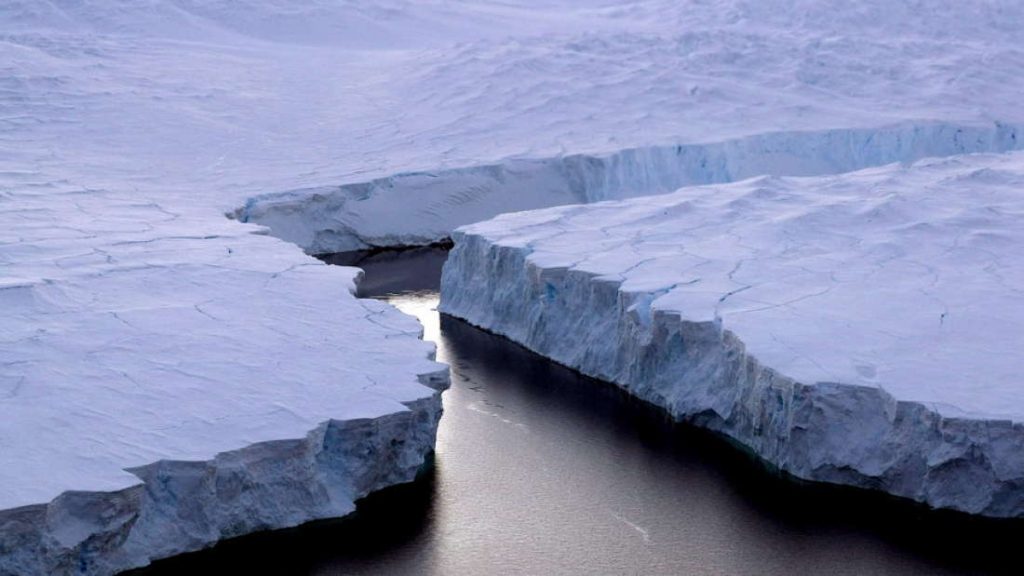
A piece of the Larsen Ice Shelf snapped off, creating one of the largest icebergs ever recorded. Image: EPA
A few days ago, the news broke that a massive piece of the Larsen Ice Shelf snapped off Antarctica, forming one of the largest icebergs in existence. It truly is massive: almost 2,500 square miles with a weight estimated to be around 1 trillion tons. Although it is very big, it’s dwarfed by the largest iceberg of the modern era. The B-15 iceberg that broke off the Ross Ice Shelf in 2000 was a over 4,000 square miles. It has since broken up in to smaller pieces.
When Larsen C finally broke off, researchers weren’t surprised–they had, in fact, been monitoring the slow breakup of the ice shelf for years. Up until ’95, the Larsen Ice Shelf was comprised of three main parts: Larsen A, B, and C. Then, in 1995, Larsen A, the smallest of the three, collapsed. Then, in 2002, Larsen B began to fall apart. And last year, NASA researchers noticed a rift in Larsen C that was about 70 miles long and 300 feet wide. It, of course, signaled the fate of the last part of the remaining shelf.

A map of Larsen C overlaid with NASA’s MODIS thermal image from today. Image:Project Midas/IFLScience
If you’re worried about the effect this might have on sea-level rise, don’t be. Ice shelves have no bearing on it, because they’re (as the name implies) merely shelves hanging off the edge. They’re already in the water, but they do play a role in holding back glaciers that sit behind them. Ice shelves routinely break off and form icebergs, and the glaciers advance and create more. Researchers also don’t believe the demise of the Larsen Shelf has anything to do with climate change. “Although many scientists believed that climate change has made the cracks grow quicker, the event is best described as a geographical event rather than a climate event,” wrote Tom Hale for ILFScience.com.

